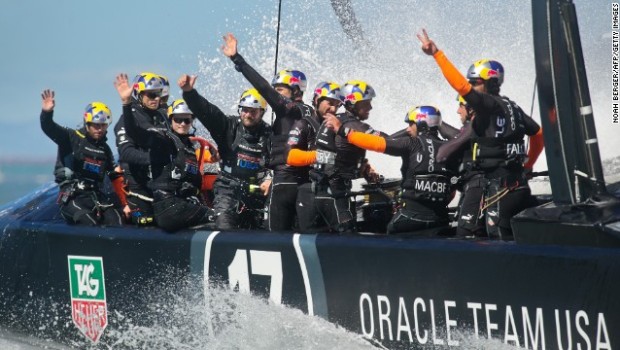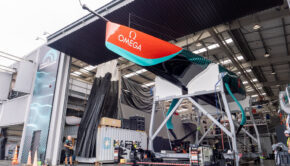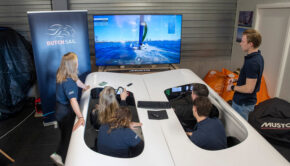What Business Can Learn from the Greatest Comeback in Sports History
Published on April 14th, 2014
by Nathan Bennett and Dave Forquer, Harvard Business Review
During last fall’s America’s Cup, Oracle Team USA staged the greatest comeback in modern sports history. On September 18, Skipper Jimmy Spithill’s crew was behind 8-1 in the best of 17 series. In just over a week, they rattled off eight straight victories to defeat Team New Zealand, 9-8. New Zealand didn’t get slower; Oracle got that much faster.
Hoping to find some generalizable lessons from the spectacular turnaround, we spent time learning about what happened that week from one of the crew, grinder Gilberto Nobili. What we heard suggested six pieces of advice that leaders of land-based businesses might do just as well to heed.
Cross-fit your company. This Cup was a departure from previous ones in various respects. For one thing, to attract a wider audience, it was held within the confines of San Francisco Bay. And to amp up the spectator experience, the AC 72 – a boat that sails faster than the wind powering it – was introduced. Both put new demands on crews. On a traditional ocean course, a great deal of activity would go into tacking and setting a course, followed by a long period of relative inactivity. On an AC 72 in a bay, there is no such thing as inactivity. The boats require nearly constant maneuvering – and a crew continually in motion.
Nobili credits a cross-fit training regimen for helping the team prepare, not just physically but also psychologically: “A key element of the cross-fit approach is that every day presents a different challenge. It got us used to thinking and doing different things together every day.” It’s that mental exercise that carries over as a lesson for businesses. Companies tend to creating rigid routines for specialized tasks to achieve productivity, but they pay for that in reduced agility and resilience. They, too, need to build the “connective tissue” that will allow people to make smart, spontaneous moves to create customer value, in coordination with others.
Learn quickly from disruption. This Cup also featured a disruptive innovation: the practice of “foiling.” Sailboats have always sailed through the water; the new speed possible with the AC 72 allowed them to rise above the water. But it’s no small matter to control a foiling boat – and the reigning champion Oracle saw no reason to take the risk. As Nobili explained, “We designed our boat for displacement sailing. We didn’t think about foiling. New Zealand approached the race differently. They designed a 33-foot foiling boat years ago and then built their AC 72 with those lessons in mind.” As Oracle’s losses mounted, the new reality became clear: “We wouldn’t win if we couldn’t foil; New Zealand had a head start of many months.”
To Oracle’s credit, it responded fast. Designers reworked the boat itself, reshaping and repositioning foils and wings and redistributing weight; meanwhile the crew practiced the techniques. The stunning outcome underscores the lesson for any business: When disruption hits your business, recognize it, and start making your own transformation instantly. – Read on









 We’ll keep your information safe.
We’ll keep your information safe.